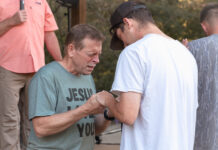
It is Winter Break time in some counties in the Northeast Georgia Mountains. Lumpkin County School System’s Winter Break begins Monday, February 24, and ends Friday, February 28. For many parents who are accustomed to their children being in school, it will be a week of planning and negotiating.
Take the time to enjoy these moments with your children and encourage them to get outside, breathe fresh air, and have fun away from screens and the indoors. It can be a great chance for them to recharge and be ready to start back to school on Monday, March 3.
Planning activities for their children during the break can be a struggle for some parents. Here are some inexpensive ideas to add fun and learning to your Winter Break week.
1. DIY Craft Projects
Crafting is a fantastic way to keep kids busy while also encouraging creativity. You don’t need to buy expensive craft kits; you can make fun projects using household items.
Paper Snowflakes: Cut simple snowflakes out of white paper. You can make intricate designs and decorate them for the windows.
Pinecone Art: Collect pinecones from outside and let kids decorate them with glitter, paint, or even turn them into little animal figures.
Handmade Cards: Have your children create their own greeting cards using colored markers, stamps, and stickers for people in nursing homes or hospitals. It is a great way to teach service to others.
2. Winter Nature Walks
Bundle up and head outside for a nature walk. Even in the cold, the winter season has plenty to offer. Kids can search for animal tracks in the snow, collect interesting stones or pinecones, or enjoy the crisp air. Bring a thermos of hot chocolate or warm cider to make the walk more enjoyable. You can also combine this with a scavenger hunt, asking the kids to find specific things like animal footprints, a bird’s nest, or a certain type of tree.
For older children and teenagers, plan a scavenger hunt. Set a timer and write items to find in nature. See if they can beat the time and set a record!
3. Indoor Obstacle Course
When it’s too cold to play outside, set up an indoor obstacle course. Use furniture, pillows, blankets, and toys to create different challenges for your children to complete. Kids can race from one end of the house to another, crawling under tables, jumping over pillows, or weaving through chairs. This is a great way to get them moving and expend some energy.
4. Baking Together
Winter is the perfect time to spend cozy hours in the kitchen, and baking is fun and educational for children. You can make simple cookies, brownies, or cupcakes. Get the kids to mix the batter, roll dough, or decorate their baked goods. They’ll love the process—and the tasty results! Plus, baking is an opportunity to teach children basic math and measuring skills.
5. Family Movie Night
A classic winter activity is to snuggle up with your kids for a family movie night. You don’t need to spend money on expensive movie rentals—many family-friendly films can be found on streaming platforms or even on broadcast television. To make it extra special, pop some homemade popcorn and create a cozy movie-watching area with blankets and pillows.
6. Winter-Themed Games
Games can be both educational and fun during winter break. You can create a variety of winter-themed activities using materials you already have. Try building a snowman out of marshmallows, or play a “snowball toss” game with soft white socks (or crumpled paper balls). You could also create a bingo game with winter-themed images, like snowflakes, snowmen, or hot cocoa mugs.
7. Reading Time
Encourage kids to curl up with a good book or read together as a family. If you don’t have a lot of books at home, check out your local library for winter-themed books or holiday stories. For added fun, you can act out scenes, do character voices, or even have a mini book club discussion with older children. Reading not only entertains but also fosters a love of learning.
8. Build a Fort
Building a fort out of blankets, cushions, and furniture is a time-honored tradition in many households. Once the fort is built, kids can use it as their personal hideaway for the day, reading books, playing pretend games, or even having a sleepover in it. This activity is not only fun, but it also lets children use their imagination in creative ways.
9. Science Experiments
There are plenty of simple science experiments you can try with household materials. For example, create a “volcano” by mixing baking soda and vinegar, or make slime with glue and borax. These activities are not only fun but also educational, helping kids learn about chemical reactions and physical properties in an interactive way.
10. Puzzle and Board Games
Bring out the old puzzles or board games and engage the whole family. Games like Scrabble, Monopoly, and Chutes and Ladders, Parcheesi, Mancala can provide hours of fun for kids of all ages. If you have younger children, try games that involve matching, sorting, or counting.
11. Volunteer Together
Volunteering can be an excellent way for children to learn empathy and develop an understanding of their community. Look for local opportunities where your family can help, such as packing food at a food bank or donating gently used clothes. Helping others is a rewarding and meaningful way to spend time together.
12. Make a Life Book
Print out pictures of your child doing different events through out life. It is a fun way to look back on memorable occassions, but a way to make a keepsake.
Good luck! Hang in there! And just remember, school will start again, Monday, March 3






